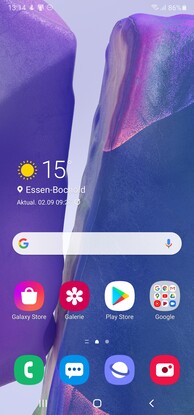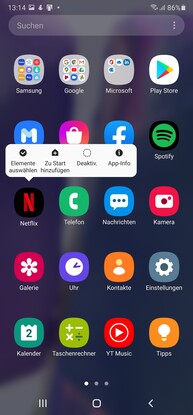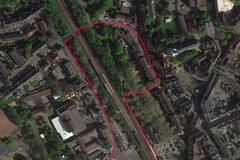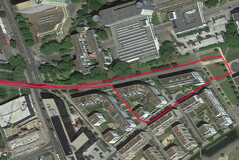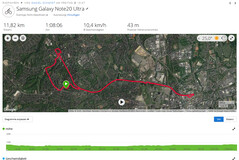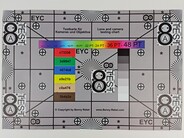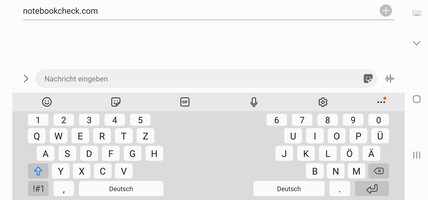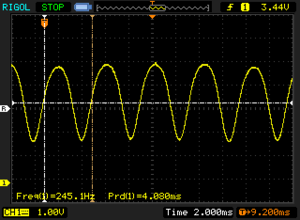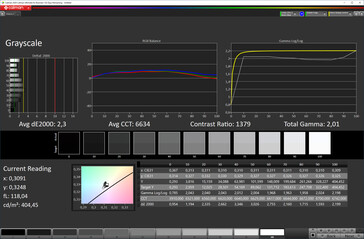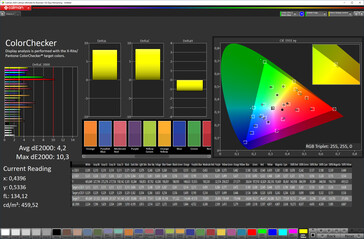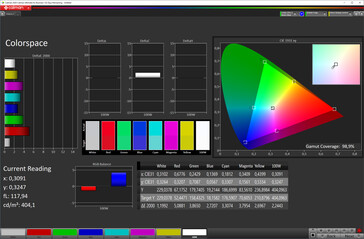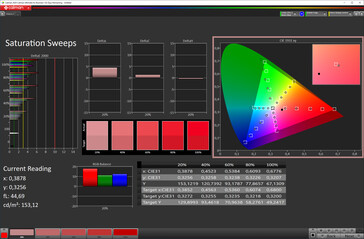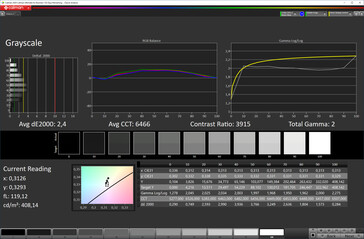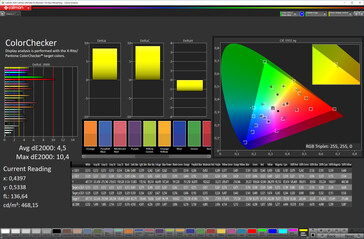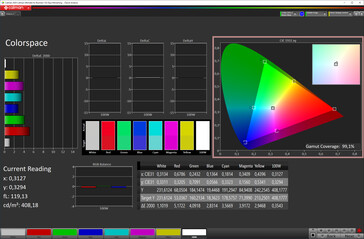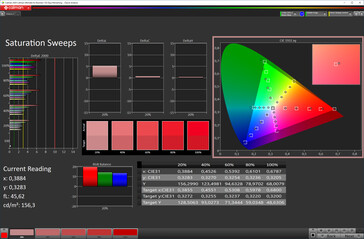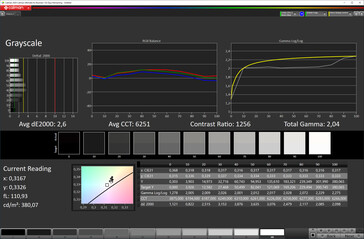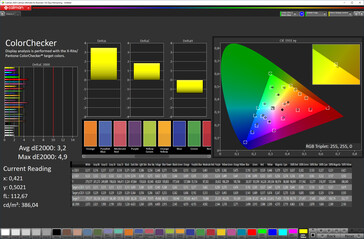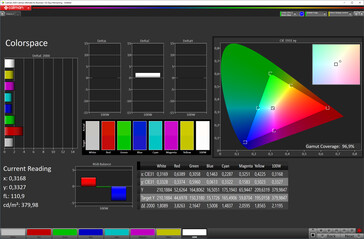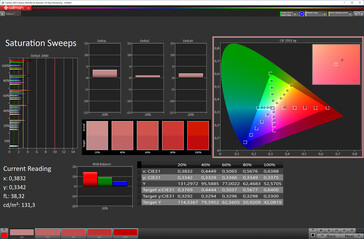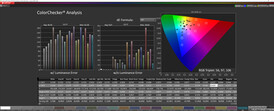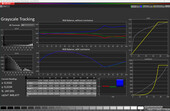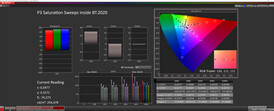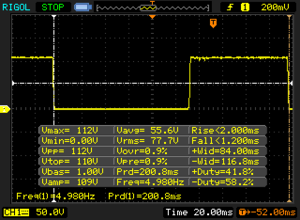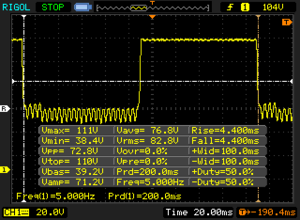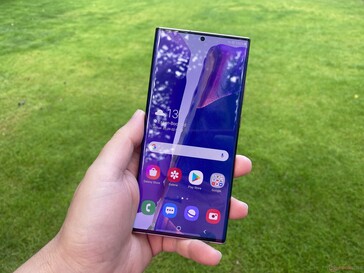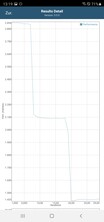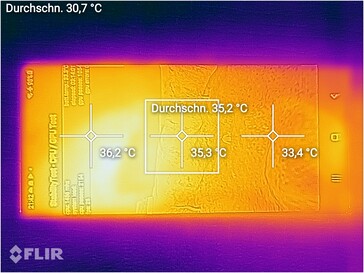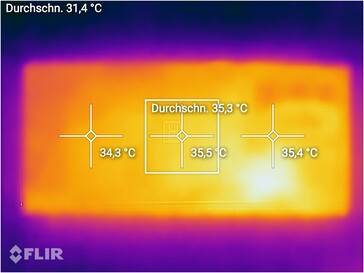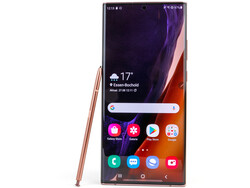Samsung Galaxy Note20 Ultra review - Smartphone with powerful features and S Pen included
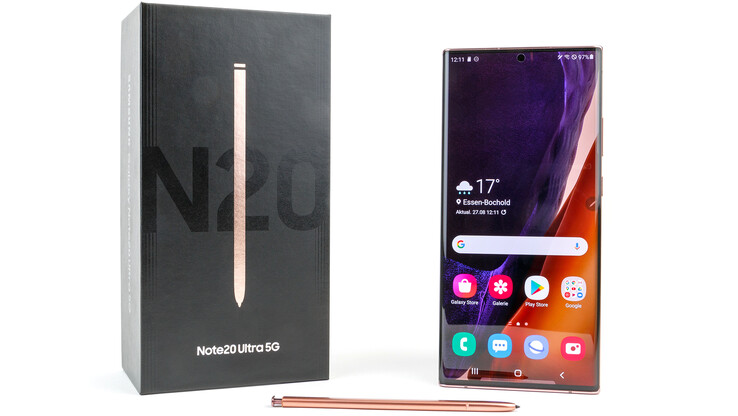
The Samsung Galaxy Note20 Ultra is the direct successor of the Galaxy Note10+, and it's only available in the 5G version in Germany. With 256 GB of storage, this version costs 1,266 Euros (~$1,499). Those who need more storage space can choose the 512 GB model, which will set you back 1,364 Euros (~$1,615).
Compared to its predecessor, Samsung has done a lot of fine-tuning, and the camera has been upgraded in particular. The new display also promises even better values. In addition, the S Pen is said to have been further improved and, above all, to have shorter response times than the Note10 models and the smaller Note20. However, there's a downside for Europeans because the Note20 Ultra also comes with the Exynos 990, which means less performance and battery life compared to the Snapdragon 865 that is used in other regions. But Samsung wants to optimize it further.
With the Note10+, the mediocre battery life and the initially somewhat slow WLAN were the focus of our criticism. In the following review, you'll find out whether Samsung has improved upon this with the Note20 Ultra and whether an upgrade is worth it.
Comparison devices
Rating | Date | Model | Weight | Drive | Size | Resolution | Price |
|---|---|---|---|---|---|---|---|
| 89.6 % v7 (old) | 02 / 2021 | Samsung Galaxy Note20 Ultra Exynos 990, Mali-G77 MP11 | 208 g | 256 GB UFS 3.1 Flash | 6.90" | 3088x1440 | |
| 87.5 % v7 (old) | 08 / 2019 | Samsung Galaxy Note10+ Exynos 9825, Mali-G76 MP12 | 196 g | 256 GB UFS 3.0 Flash | 6.80" | 3040x1440 | |
| 89 % v7 (old) | 12 / 2019 | Huawei Mate 30 Pro Kirin 990, Mali-G76 MP16 | 198 g | 256 GB UFS 3.0 Flash | 6.53" | 2400x1176 | |
| 88.2 % v7 (old) | 04 / 2020 | Xiaomi Mi 10 Pro SD 865, Adreno 650 | 208 g | 256 GB UFS 3.0 Flash | 6.67" | 2340x1080 | |
| 87.1 % v7 (old) | 09 / 2019 | Apple iPhone 11 Pro Max A13 Bionic, A13 Bionic GPU | 226 g | 64 GB SSD | 6.50" | 2688x1242 |
Case - Note20 Ultra with matte glass
The Samsung Galaxy Note20 Ultra is available in Mystic White, Mystic Black and Mystic Bronze. Compared to its predecessor, it weighs 12 grams and has increased in both height and length. Visually, the huge camera module immediately catches one's eye; it protrudes 2.45 millimeters to the back. The module is now covered with a matte glass, which is a real highlight both visually and haptically - fingerprints are still visible on it, but it can't be compared to having a reflective glass.
The Galaxy Note20 Ultra is also the first smartphone to use the new Gorilla Glass Victus, which has already proven itself in many tests. Workmanship as such is excellent. The gap dimensions are very narrow, and all edges meet in a clean way. Furthermore, the smartphone doesn't have any problems with exerted pressure or twisting attempts.
The cover of the SIM/SD card tray is the same color as the rest of the metal frame and is flush with it. The tray itself is made of gray plastic and can hold either two nano SIM cards or a microSD card instead of the second SIM card. The Galaxy Note20 Ultra is also protected against dust and water ingress in accordance with the IP68 standard.
Connectivity - Samsung phone with USB 3.2
If you were looking forward to new features or more speed in regard to the USB port because of the USB 3.2 name, you will be disappointed since Samsung has simply only adjusted the naming. More precisely, this is a USB 3.2 Gen 1 port (formerly called USB 3.1 Gen 1, and before that, USB 3.0) that supports data transfers at up to 5 Gb/s as well as image output to HDMI or DisplayPort inputs. Samsung DeX is still available as a desktop system, but it's still limited to 1080p on an external display. But if you want to transmit the image over a DisplayPort connection and only want to mirror the smartphone, you can also do this at Ultra HD (60 FPS).
The microSD slot can manage storage media of up to 1 TB and supports the exFAT file system. Apps can partially store data in this optional storage space, but they can't be installed there directly.
In terms of the other interfaces, nothing has changed compared to the predecessor. The Note20 Ultra also lacks both a radio receiver and an IR blaster. In the same way, Samsung continues to do without an audio jack and also includes a suitable adapter in the box.
Software - Note20 with One UI 2.5 and Android 10
The Samsung Galaxy Note20 Ultra comes with the latest Android 10 and the in-house One UI 2.5. It's certainly positive that the Koreans have meanwhile promised three major updates for their flagship smartphones (as we reported), so that buyers can even expect to receive Android 13 on the Note20 Ultra.
Samsung has preinstalled numerous third-party apps again. These include Facebook, Netflix, Spotify, and several apps from Microsoft. The entertainment providers in particular can't be deleted but only deactivated. In addition, the integration of My Smartphone is also practical; it allows you to receive notifications directly on your own Windows computer or to simply mirror your smartphone in a separate window and exchange data via drag-and-drop.
The Note20 Ultra also supports the Xbox Game Pass Ultimate service, so that console titles can be streamed directly from the cloud to the smartphone.
Communication and GNSS - Galaxy smartphone with Wi-Fi 6 and 5G
The Samsung Galaxy Note20 Ultra features a Wi-Fi 6 WLAN module that ensures high transfer speeds in combination with our Netgear Nighthawk AX12 reference router. The reception of data is very stable, and while the data rates fluctuate slightly when sending data, they still remain at a high level. The WLAN's range is also convincing in the test.
In terms of mobile connections, the Note20 Ultra can access the Internet using all modern and old mobile radio standards. In addition to LTE Cat. 20, 5G is also available with a broad frequency coverage. Unlike the Snapdragon versions, however, mmWave support isn't available here.
The hybrid SIM slot can house two nano SIM cards, one of which can be connected to the 5G network. Users who occupy the second slot with a memory card can also make use of the integrated eSIM.
The Samsung Galaxy Note20 Ultra supports the GPS (GNSS), GLONASS, BeiDou, and Galileo satellite networks, of which the American and European GNSS can also be used in dual-band mode. Determining the current location takes quite a long time indoors, and it's not very accurate either, but outdoors, it works fast and with high precision.
On our mandatory bike ride, the Samsung phablet has to face the comparison with the Garmin Edge 500. Throughout the total distance of almost 12 kilometers, the two are just 80 meters apart from each other. When it comes to the details, the Note20 Ultra is able to convince and even provides a more precise location than the bike computer.
Telephone and call quality
We really like the call quality of the Samsung Galaxy Note20 Ultra when the smartphone is held to the ear. The persons on each end can be understood perfectly and even loud ambient noise is filtered out.
However, performance in hands-free mode is less good. The user's voice sounds slightly muffled, and if the smartphone isn't immediately next to you, your voice is only registered very quietly.
Features like VoLTE and WLAN calling are supported by the Galaxy Note20 Ultra.
Cameras - Galaxy Note20 with improved zoom
The front-facing camera of the Galaxy Note20 Ultra has a resolution of 10 MP and a dual-pixel autofocus. Not only does it produce balanced selfies during the day, but videos can be recorded as well with a maximum resolution of 2160p and 60 FPS.
The triple-camera setup on the back has the same 108 MP sensor as the Galaxy S20 Ultra, but it has been noticeably improved, especially in terms of autofocus. Photos taken in daylight look very good, and even in low light, the quality can convince due to the use of clever software. Samsung has followed Apple's example here and simply activates night mode automatically if there's not enough light. If you don't want this behavior, you can also deactivate it in the settings. In our low-light setting, this means that the Note20 Ultra needs a full three seconds to take a picture. The outcome is correspondingly good and suggests a better result, in comparison, than with the Huawei P40 Pro+, but this impression is deceptive because the Huawei smartphone only needed a moment to take the photo. If we give the Note20 Ultra the same time, the result is much worse. If you want to capture static subjects at night, you won't find this annoying, but camera shake is guaranteed when it comes to pictures of people.
Samsung has taken a big step in the right direction with its zoom lens since it now features a full-fledged 5x optical magnification (digital zoom up to 50x); this has a very noticeable positive impact on the pictures taken and brings the Note20 Ultra very close to the competition from Huawei. The performance of the ultra-wide angle is identical to that of the S20 Ultra.
Videos can be recorded in 8K at 24 frames per second at best. If you want 60 FPS, you have to use Ultra HD or Full HD. In addition, super slow motion and numerous other functions are also available again.
Image comparison
Choose a scene and navigate within the first image. One click changes the position on touchscreens. One click on the zoomed-in image opens the original in a new window. The first image shows the scaled photograph of the test device.
WeitwinkelWeitwinkelLow-LightZoomUltraweitwinkelUnder adjusted lighting conditions, the Galaxy Note20 Ultra shows a high level of detail when capturing our test chart, which is also due to the high megapixel count under good lighting conditions. Nevertheless, the image shows slight deficits when it comes to fine letters and the area of the edges.
Color reproduction looks comparatively natural and only slightly oversaturated.
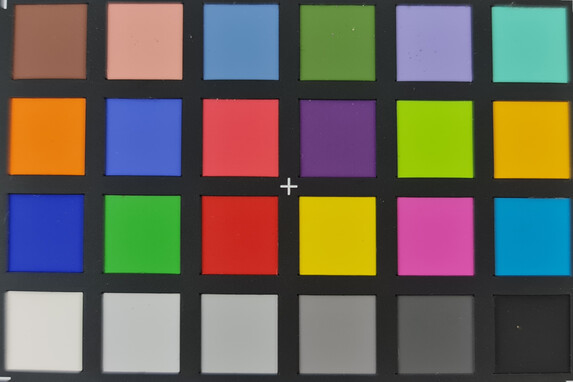
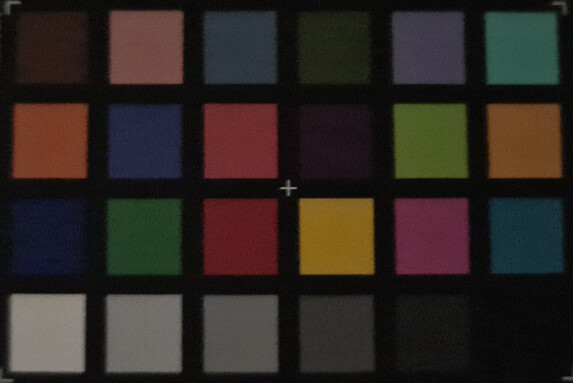
Accessories and warranty - S Pen without replacement tips
The Samsung Galaxy Note20 Ultra comes with a modular power adapter (25 watts), a USB cable, a headset, a SIM tool, and documentation. The tweezers and replacements tips for the S Pen are no longer included, which is very questionable in terms of sustainability, especially since these are not offered in the store and only replacement pens can be found on the web. Moreover, there are numerous optional cases available for the smartphone that start at just under 20 Euros (~$24).
Users who want to insure their smartphone against accidental damage for two years can also get the Care+ package, which requires a one-time payment of 149 Euros (~$176) or paying 7 Euros (~$8) per month. Apart from that, Samsung generally offers a 24-month warranty on its product.
Input devices and handling - S Pen power
The S Pen is the unique selling point of the Galaxy Note series, and at first glance, it's very similar to its predecessor. It recognizes up to 4,096 pressure levels and has a 0.7-millimeter wide tip. The input latency is said to have been improved from 25 to 9 milliseconds. However, according to the information on the Samsung website in the USA, this is, to a much larger extent, due to the 120 Hz panel than to modifications in the pen; subjectively, we couldn't detect any changes in direct comparison with the Galaxy Note10+ at least. In addition, the pens can be exchanged between the different generations without any problems. In any case, the standby times of the S Pen, which also communicates with the Note20 via Bluetooth, were improved. While the predecessor had a standby time of up to 10 hours, it's now been increased to a full 24 hours. The range of functions has neither been expanded nor reduced. In addition to the off-screen notes, other features include the ability to write on screenshots as usual, and text can also be formatted directly into Word using handwriting recognition. The small pen offers numerous possibilities and continues to provide a good writing experience that feels a little firmer than with the Note10.
The capacitive touchscreen recognizes up to ten touchpoints simultaneously and very reliably. The gliding properties of the Corning Gorilla Glass Victus are excellent. Furthermore, a fingerprint scanner was integrated into the display for biometric security; it has a high recognition rate and unlocks the smartphone quickly. Unlocking the phone is easier and faster with the 2D face-recognition feature, but it's also less secure.
Display - Samsung with super-bright AMOLED
The Dynamic AMOLED display of the Samsung Galaxy Note20 Ultra has a diagonal size of 6.9 inches (17.53 cm), but it has the same technical pitfall as the S20 Ultra in that it gives users the choice of either selecting the QHD+ high resolution and using only 60 Hz, or reducing the resolution to Full HD+ in order to then use an adaptive refresh rate of up to 120 Hz.
With the ambient light sensor activated, the panel achieves an enormously high luminosity of 878 cd/m² on average with a pure white background on the display, and it's very evenly illuminated too. In a measurement with evenly distributed light and dark areas (APL50), the brightness even increases to 1,221 cd/m², and it reaches 1,350 cd/m² in the APL10 test. Excellent! If you deactivate the ambient light sensor, you can get a maximum of 399 cd/m², but the sensor will still intervene when it gets very bright.
The Galaxy Note20 Ultra is not immune to the typical flickering of an OLED panel either, but this happens between 231.5 and 245.1 Hz and thus within a rather narrow range, so that sensitive users should tend to have fewer complaints, if anything.
Otherwise, Samsung offers a highly configurable always-on display and a blue-light filter to protect the eyes in the evening. HDR10 and HDR10+ are also supported.
| |||||||||||||||||||||||||
Brightness Distribution: 96 %
Center on Battery: 860 cd/m²
Contrast: ∞:1 (Black: 0 cd/m²)
ΔE ColorChecker Calman: 4.5 | ∀{0.5-29.43 Ø4.78}
ΔE Greyscale Calman: 2.4 | ∀{0.09-98 Ø5}
96.9% sRGB (Calman 2D)
Gamma: 2
CCT: 6466 K
| Samsung Galaxy Note20 Ultra Dynamic AMOLED, 3088x1440, 6.9" | Samsung Galaxy Note10+ Dynamic AMOLED, 3040x1440, 6.8" | Huawei Mate 30 Pro OLED, 2400x1176, 6.5" | Xiaomi Mi 10 Pro Super AMOLED, 2340x1080, 6.7" | Apple iPhone 11 Pro Max OLED, 2688x1242, 6.5" | |
|---|---|---|---|---|---|
| Screen | 9% | 4% | 30% | 23% | |
| Brightness middle (cd/m²) | 860 | 683 -21% | 592 -31% | 753 -12% | 790 -8% |
| Brightness (cd/m²) | 878 | 694 -21% | 605 -31% | 762 -13% | 790 -10% |
| Brightness Distribution (%) | 96 | 96 0% | 96 0% | 96 0% | 97 1% |
| Black Level * (cd/m²) | |||||
| Colorchecker dE 2000 * | 4.5 | 2.9 36% | 2.5 44% | 0.9 80% | 1.4 69% |
| Colorchecker dE 2000 max. * | 10.4 | 4.8 54% | 5.5 47% | 1.6 85% | 3.4 67% |
| Greyscale dE 2000 * | 2.4 | 2.2 8% | 2.6 -8% | 1.5 37% | 1.9 21% |
| Gamma | 2 110% | 2.11 104% | 2.16 102% | 2.24 98% | 2.23 99% |
| CCT | 6466 101% | 6247 104% | 6173 105% | 6415 101% | 6466 101% |
* ... smaller is better
Screen Flickering / PWM (Pulse-Width Modulation)
| Screen flickering / PWM detected | 245.1 Hz | ≤ 99 % brightness setting | |
The display backlight flickers at 245.1 Hz (worst case, e.g., utilizing PWM) Flickering detected at a brightness setting of 99 % and below. There should be no flickering or PWM above this brightness setting. The frequency of 245.1 Hz is relatively low, so sensitive users will likely notice flickering and experience eyestrain at the stated brightness setting and below. In comparison: 53 % of all tested devices do not use PWM to dim the display. If PWM was detected, an average of 8101 (minimum: 5 - maximum: 343500) Hz was measured. | |||
The CalMAN display analysis also shows that the panel of the Galaxy Note20 Ultra is very good. But even with optimal settings, there are competitors that achieve more accurate color and grayscale reproductions than the Samsung phone; this criticism can very much be described as nitpicking, though.
Display Response Times
| ↔ Response Time Black to White | ||
|---|---|---|
| 3.2 ms ... rise ↗ and fall ↘ combined | ↗ 2 ms rise | |
| ↘ 1.2 ms fall | ||
| The screen shows very fast response rates in our tests and should be very well suited for fast-paced gaming. In comparison, all tested devices range from 0.1 (minimum) to 240 (maximum) ms. » 13 % of all devices are better. This means that the measured response time is better than the average of all tested devices (20.2 ms). | ||
| ↔ Response Time 50% Grey to 80% Grey | ||
| 8.8 ms ... rise ↗ and fall ↘ combined | ↗ 4.4 ms rise | |
| ↘ 4.4 ms fall | ||
| The screen shows fast response rates in our tests and should be suited for gaming. In comparison, all tested devices range from 0.165 (minimum) to 636 (maximum) ms. » 21 % of all devices are better. This means that the measured response time is better than the average of all tested devices (31.6 ms). | ||
Performance - Exynos 990 with better system performance
The European version of the Samsung Galaxy Note20 Ultra is equipped with the in-house Exynos 990, which is accompanied by 12 GB of LPDDR5 RAM. An ARM Mali-G77 MP11 GPU is available for graphics processing. We already know this SoC from the Galaxy S20 series, and it definitely delivers strong performance, but it falls short of Qualcomm's current top-of-the-line SoCs. This is particularly annoying because the Snapdragon 865 Plus is installed in other regions, so that the performance gap is even wider than with the S20 models.
The SoC itself performs at the expected level in the benchmarks, but it's slightly improved in the system benchmarks. In some GFXBench test runs, however, the Exynos 990's performance drops a little in the off-screen values, which is due to thermal deficits.
| PCMark for Android | |
| Work performance score (sort by value) | |
| Samsung Galaxy Note20 Ultra | |
| Samsung Galaxy Note10+ | |
| Huawei Mate 30 Pro | |
| Xiaomi Mi 10 Pro | |
| Average Samsung Exynos 990 (13627 - 14760, n=5) | |
| Work 2.0 performance score (sort by value) | |
| Samsung Galaxy Note20 Ultra | |
| Samsung Galaxy Note10+ | |
| Huawei Mate 30 Pro | |
| Xiaomi Mi 10 Pro | |
| Average Samsung Exynos 990 (10008 - 11784, n=5) | |
| AnTuTu v8 - Total Score (sort by value) | |
| Samsung Galaxy Note20 Ultra | |
| Huawei Mate 30 Pro | |
| Xiaomi Mi 10 Pro | |
| Apple iPhone 11 Pro Max | |
| Average Samsung Exynos 990 (296746 - 527820, n=5) | |
| Basemark GPU 1.1 | |
| 1920x1080 Vulkan Medium Offscreen (sort by value) | |
| Samsung Galaxy Note10+ | |
| Huawei Mate 30 Pro | |
| Average Samsung Exynos 990 (71.4 - 71.6, n=2) | |
| Vulkan Medium Native (sort by value) | |
| Samsung Galaxy Note10+ | |
| Huawei Mate 30 Pro | |
| Average Samsung Exynos 990 (42.3 - 63, n=2) | |
| 1920x1080 OpenGL Medium Offscreen (sort by value) | |
| Samsung Galaxy Note10+ | |
| Huawei Mate 30 Pro | |
| Average Samsung Exynos 990 (84.1 - 85.6, n=2) | |
| VRMark - Amber Room (sort by value) | |
| Samsung Galaxy Note10+ | |
| Huawei Mate 30 Pro | |
| Xiaomi Mi 10 Pro | |
| Average Samsung Exynos 990 (4607 - 4957, n=3) | |
Surfing the web with the Galaxy Note20 Ultra feels very fast, but it only ends up in the midfield in the benchmarks.
| Jetstream 2 - 2.0 Total Score | |
| Average of class Smartphone (23.8 - 387, n=149, last 2 years) | |
| Apple iPhone 11 Pro Max (Safari Mobile 13.1) | |
| Huawei Mate 30 Pro (Chrome 78) | |
| Xiaomi Mi 10 Pro (Chrome 81) | |
| Samsung Galaxy Note20 Ultra (Chrome 84) | |
| Average Samsung Exynos 990 (50.6 - 56.8, n=5) | |
| Samsung Galaxy Note10+ (Samung Browser 9.2) | |
| JetStream 1.1 - Total Score | |
| Apple iPhone 11 Pro Max (Safari Mobile 13.1) | |
| Huawei Mate 30 Pro (Chrome 78) | |
| Xiaomi Mi 10 Pro (Chrome 81) | |
| Samsung Galaxy Note20 Ultra (Chrome 84) | |
| Average Samsung Exynos 990 (89.3 - 96.2, n=5) | |
| Samsung Galaxy Note10+ (Samsung Browser 9.2) | |
| Speedometer 2.0 - Result 2.0 | |
| Average of class Smartphone (15.2 - 643, n=122, last 2 years) | |
| Apple iPhone 11 Pro Max (Safari Mobile 13.1) | |
| Huawei Mate 30 Pro (Chrome 78) | |
| Xiaomi Mi 10 Pro (Chrome 81) | |
| Average Samsung Exynos 990 (50.8 - 64.4, n=4) | |
| Samsung Galaxy Note10+ (Samsung Browser 9.2) | |
| WebXPRT 3 - Overall | |
| Apple iPhone 11 Pro Max (Safari Mobile 13.1) | |
| Average of class Smartphone (38 - 380, n=31, last 2 years) | |
| Huawei Mate 30 Pro (Chrome 78) | |
| Samsung Galaxy Note10+ (Samsung Browser 9.2) | |
| Samsung Galaxy Note20 Ultra (Chrome 84) | |
| Xiaomi Mi 10 Pro (Chrome 81) | |
| Average Samsung Exynos 990 (86 - 102, n=5) | |
| Octane V2 - Total Score | |
| Apple iPhone 11 Pro Max (Safari Mobile 13.1) | |
| Average of class Smartphone (2228 - 121337, n=197, last 2 years) | |
| Huawei Mate 30 Pro (Chrome 78) | |
| Xiaomi Mi 10 Pro (Chrome 81) | |
| Samsung Galaxy Note20 Ultra (Chrome 84) | |
| Samsung Galaxy Note10+ (Samsung Browser 9.2) | |
| Average Samsung Exynos 990 (18094 - 20022, n=5) | |
| Mozilla Kraken 1.1 - Total | |
| Samsung Galaxy Note10+ (Samsung Browser 9.2) | |
| Average Samsung Exynos 990 (2294 - 2511, n=5) | |
| Samsung Galaxy Note20 Ultra (Chrome 84) | |
| Xiaomi Mi 10 Pro (Chrome 81) | |
| Huawei Mate 30 Pro (Chrome 78) | |
| Average of class Smartphone (257 - 28190, n=154, last 2 years) | |
| Apple iPhone 11 Pro Max (Safari Mobile 13.1) | |
* ... smaller is better
Our test device contains 256 GB of UFS 3.1 storage. Optionally, it's also available with 512 GB. The differences compared to UFS 3.0 are not big because the memory bandwidth has remained the same; only the maximum write speeds have been increased considerably, which hasn't been noticeable yet on any of the smartphones that we've reviewed with this new memory type. This will surely change once there are new SoCs.
The storage speed is very high, but it shows a slightly weaker performance when reading and writing small data blocks. But this shouldn't play a noticeable role in everyday life.
The microSD card slot, which we tested with our Toshiba Exceria Pro M501 reference card, is comparatively slow.
| Samsung Galaxy Note20 Ultra | Samsung Galaxy Note10+ | Huawei Mate 30 Pro | Xiaomi Mi 10 Pro | Average 256 GB UFS 3.1 Flash | Average of class Smartphone | |
|---|---|---|---|---|---|---|
| AndroBench 3-5 | -7% | 7% | 13% | 29% | 68% | |
| Sequential Read 256KB (MB/s) | 1782 | 1504 -16% | 1781 0% | 1739 -2% | 1757 ? -1% | 2228 ? 25% |
| Sequential Write 256KB (MB/s) | 802 | 588 -27% | 401.8 -50% | 750 -6% | 1204 ? 50% | 1852 ? 131% |
| Random Read 4KB (MB/s) | 186.7 | 196.2 5% | 226.4 21% | 264.9 42% | 287 ? 54% | 296 ? 59% |
| Random Write 4KB (MB/s) | 217.7 | 183.6 -16% | 259.2 19% | 258.5 19% | 318 ? 46% | 339 ? 56% |
| Sequential Read 256KB SDCard (MB/s) | 65.6 ? | 71 ? 8% | 82.5 ? 26% | 75.9 ? 16% | ||
| Sequential Write 256KB SDCard (MB/s) | 55.6 ? | 59.5 ? 7% | 69.2 ? 24% | 61.9 ? 11% |
Games - The Note20 Ultra is optimally equipped
The Samsung Galaxy Note20 Ultra offers a good overall package for gamers. Besides a large 120 Hz display and good speakers, it also has a powerful SoC. With our partner GameBench, we took a closer look at a few titles.
With PUBG Mobile, Samsung sets an ironclad 40 FPS limit, no matter which graphics setting we choose. But in return, the game is very stable and can be played without frame drops. With Dead Trigger 2, the adaptive refresh rate can be observed very well, because the smartphone continuously adjusts the FPS even while playing the game. A small catch: The high frame rates are not possible with all titles. In this way, we can only select 60 FPS with Armajet (up to 144 FPS).
Emissions - Low performance under load
Temperature
The surface temperatures are harmless at all times, and even under load, the Samsung smartphone doesn't even get lukewarm.
Inside, however, the Note20 Ultra faces bigger problems as the Manhattan scenario of the GFXBench battery test shows. The corresponding benchmark is executed thirty times in a row, and both the battery values and the frame rates are logged. After just the seventh run, the Note loses around a third of its original performance, and after the twentieth run, the loss increases to around 50%. Other smartphones like the Asus ROG Phone 3 persistently achieve almost three times the frame rate. So it's no wonder that Samsung directly limits the frame rate in games accordingly.
(+) The maximum temperature on the upper side is 33.8 °C / 93 F, compared to the average of 35.2 °C / 95 F, ranging from 21.9 to 247 °C for the class Smartphone.
(+) The bottom heats up to a maximum of 31.1 °C / 88 F, compared to the average of 34 °C / 93 F
(+) In idle usage, the average temperature for the upper side is 25.7 °C / 78 F, compared to the device average of 32.9 °C / 91 F.
Speakers
The two speakers in the Samsung Galaxy Note20 Ultra provide a balanced sound. They are sufficiently loud, but as expected, they lack the low-bass range.
Alternatively, headphones can be connected to the USB port or Bluetooth can be used for wireless systems. The latter supports Dual Audio again, so that two Bluetooth devices can be supplied with audio signals at the same time. With SBC, AAC, aptX and LDAC, several audio codecs are supported, but you'll have to do without aptX HD or the newer aptX Adaptive.
Samsung Galaxy Note20 Ultra audio analysis
(+) | speakers can play relatively loud (88.8 dB)
Bass 100 - 315 Hz
(-) | nearly no bass - on average 22.2% lower than median
(±) | linearity of bass is average (10.7% delta to prev. frequency)
Mids 400 - 2000 Hz
(+) | balanced mids - only 4.5% away from median
(+) | mids are linear (3% delta to prev. frequency)
Highs 2 - 16 kHz
(+) | balanced highs - only 3.1% away from median
(+) | highs are linear (1.7% delta to prev. frequency)
Overall 100 - 16.000 Hz
(+) | overall sound is linear (14.7% difference to median)
Compared to same class
» 2% of all tested devices in this class were better, 2% similar, 96% worse
» The best had a delta of 11%, average was 35%, worst was 134%
Compared to all devices tested
» 19% of all tested devices were better, 4% similar, 77% worse
» The best had a delta of 4%, average was 24%, worst was 134%
Apple iPhone 11 Pro Max audio analysis
(+) | speakers can play relatively loud (85.8 dB)
Bass 100 - 315 Hz
(-) | nearly no bass - on average 15.4% lower than median
(±) | linearity of bass is average (10.3% delta to prev. frequency)
Mids 400 - 2000 Hz
(±) | higher mids - on average 5.7% higher than median
(+) | mids are linear (5.9% delta to prev. frequency)
Highs 2 - 16 kHz
(±) | higher highs - on average 8.8% higher than median
(+) | highs are linear (3.5% delta to prev. frequency)
Overall 100 - 16.000 Hz
(±) | linearity of overall sound is average (19.4% difference to median)
Compared to same class
» 27% of all tested devices in this class were better, 8% similar, 65% worse
» The best had a delta of 11%, average was 35%, worst was 134%
Compared to all devices tested
» 47% of all tested devices were better, 7% similar, 46% worse
» The best had a delta of 4%, average was 24%, worst was 134%
Battery life - Larger battery in the Note20 Ultra
Energy consumption
The Samsung Galaxy Note20 Ultra's power consumption is at a good level and is only comparatively high under full load. However, the measurements show that the communication modules require a little more power.
In addition to wireless charging at up to 15 watts, the smartphone also supports Wireless PowerShare to charge other devices. When using a cable, fast charging at 25 watts is supported, so nothing has changed compared to the Note10+ here.
| Off / Standby | |
| Idle | |
| Load |
|
Key:
min: | |
| Samsung Galaxy Note20 Ultra 4500 mAh | Samsung Galaxy Note10+ 4300 mAh | Huawei Mate 30 Pro 4500 mAh | Xiaomi Mi 10 Pro 4500 mAh | Apple iPhone 11 Pro Max 3969 mAh | Average Samsung Exynos 990 | Average of class Smartphone | |
|---|---|---|---|---|---|---|---|
| Power Consumption | -31% | -13% | 9% | -49% | -22% | -26% | |
| Idle Minimum * (Watt) | 0.65 | 0.7 -8% | 0.87 -34% | 0.61 6% | 0.92 -42% | 0.846 ? -30% | 0.842 ? -30% |
| Idle Average * (Watt) | 1.06 | 1.81 -71% | 1.75 -65% | 1.19 -12% | 2.9 -174% | 1.534 ? -45% | 1.439 ? -36% |
| Idle Maximum * (Watt) | 1.49 | 1.92 -29% | 1.83 -23% | 1.23 17% | 2.94 -97% | 1.858 ? -25% | 1.624 ? -9% |
| Load Average * (Watt) | 4.91 | 7.57 -54% | 3.85 22% | 4.18 15% | 3.65 26% | 5.14 ? -5% | 7.03 ? -43% |
| Load Maximum * (Watt) | 10.29 | 9.34 9% | 6.64 35% | 8.53 17% | 6.18 40% | 10.7 ? -4% | 11.3 ? -10% |
* ... smaller is better
Battery life
The battery of the Galaxy Note20 Ultra has a capacity of 4,500 mAh and is thus mainly responsible for the slightly better battery life compared to its predecessor.
Otherwise, the situation is similar to what we had already observed with the S20 models. The battery life is good as long as the communication modules are not involved. Although the results are also still good in our tests with activated WLAN, the runtimes are considerably shorter than with the competitors.
With moderate usage, a day of use is certainly easily possible. But if you communicate a lot, take pictures or even play games online, you will have to recharge in between.
| Samsung Galaxy Note20 Ultra 4500 mAh | Samsung Galaxy Note10+ 4300 mAh | Huawei Mate 30 Pro 4500 mAh | Xiaomi Mi 10 Pro 4500 mAh | Apple iPhone 11 Pro Max 3969 mAh | |
|---|---|---|---|---|---|
| Battery runtime | -1% | 20% | 17% | 53% | |
| Reader / Idle (h) | 20.4 | 26.4 29% | 36.2 77% | 35.6 75% | 43.6 114% |
| H.264 (h) | 16.6 | 15.6 -6% | 18.3 10% | 16.2 -2% | 22.4 35% |
| WiFi v1.3 (h) | 10.7 | 8.9 -17% | 13.7 28% | 14.4 35% | 15.2 42% |
| Load (h) | 5.6 | 5.1 -9% | 3.7 -34% | 3.3 -41% | 6.8 21% |
Pros
Cons
Verdict - A tough choice
At the time of testing, the Samsung Galaxy Note20 Ultra is one of the best smartphones available. The phablet shines in the test with a very bright AMOLED display, high system speed, a good and versatile camera, pleasing speakers, and a fancy design. And then there's the S Pen, a very mature product with many great features.
The Samsung Galaxy Note20 Ultra offers a pretty complete package, and the three-year update promise guarantees a long life.
Only a look at the details reveals minor annoyances; these include, above all, the dilemma of the different SoCs, which simply leaves a bad taste in your mouth. Not only is the performance weaker with the Exynos SoC, but the energy efficiency suffers as well, and 5G has to deal with the lack of mmWave support. The calibration of the display could have been a bit more accurate too; although this is hardly noticeable to the naked eye, it prevents a better rating for the display. In addition, we would have also expected from a high-end product that the panel's 120 Hz mode worked at QHD+ resolution too.
For Note lovers, there's no way around the Galaxy Note20 Ultra anyway, but owners of last year's version in particular will find little incentive to upgrade, since Samsung simply hasn't improved some details at all. Users who don't have an issue with the high price will get a great smartphone.
Samsung Galaxy Note20 Ultra
- 08/31/2022 v7 (old)
Daniel Schmidt













